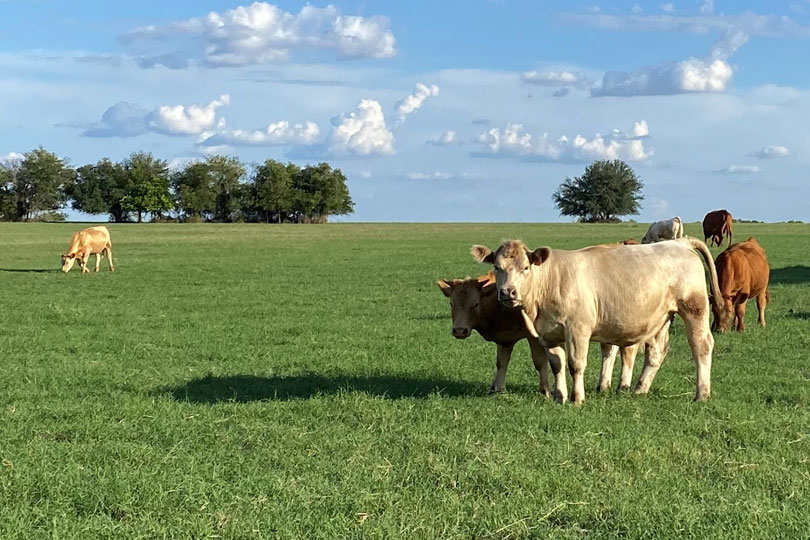By Emmy Powell
Communications Specialist
Recent rainfall has helped improve many pastures and rangelands across the state, but Texas remains under drought conditions.
The drought map for late August showed 76% of the state is in drought compared to nearly 100% a few weeks ago.
“The majority of Texas has been in some sort of drought condition—anywhere from abnormally dry to exceptional drought—for much of the year,” Tracy Tomascik, Texas Farm of Bureau associate director of Commodity and Regulatory Activities, said. “But rains in August and early September have helped revive pastures and rangelands.”
Tomascik cautioned that the drought is far from over.
“The green grass is a wonderful sight, but it’s important for ranchers to continue to evaluate carrying capacity and stocking rates for their pastures right now,” he said. “Stock tanks and ponds in most of the state haven’t caught enough water. The drought isn’t over yet.”
The U.S. Department of Agriculture’s latest Crop Progress and Condition Report shows slight improvement in pasture and range conditions. (link to report)
Over 50% of pastures are rated poor to very poor, while 29% are rated fair and 17% are rated good. Only 3% are rated in excellent condition.
“The rains have been beneficial, but we need a lot of rain over the next several months to get out of this drought,” he said. “The lack of moisture combined with the triple digit heat has made it difficult to sustain normal production levels.
In August, much of the state received rain. Some areas received over 3 inches. A few areas in the Lower Rio Grande Valley and South Texas received around 6 inches of precipitation, but other areas of the state were not as lucky. (link in August to the Facebook post with the rain gauge)
The driest areas in Texas include the High and Low Plains, the Edwards Plateau, the Blacklands, the Southern Plains and South Central Texas.
“Hay supplies are tight this year because of the lack of rainfall,” he said. “Farmers and ranchers have made hard decisions this year. They have had to sell cattle, ship in hay from out of state, bale corn stalks or give up on crops Going into next year, farmers and ranchers will be forced to play catch up to try to make up for losses this year.”
It will also be important that ranchers test for prussic acid in forage, Tomascik noted.
Learn more about the current pasture conditions in the weekly Crop Progress and Conditions reports.

